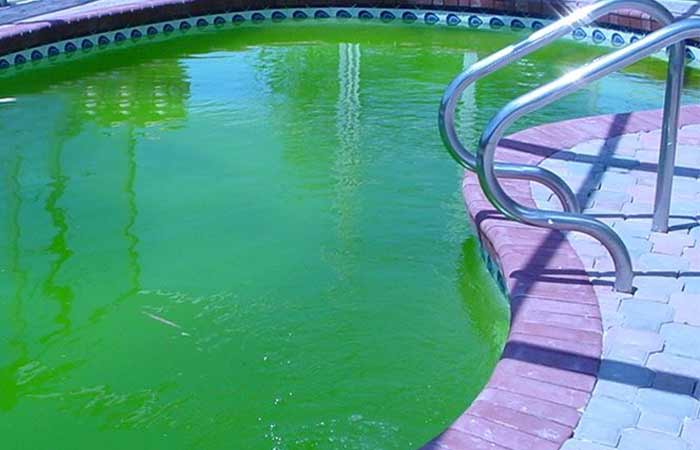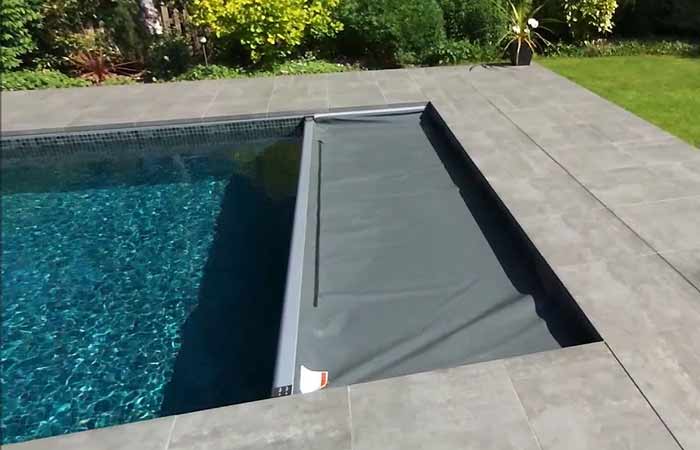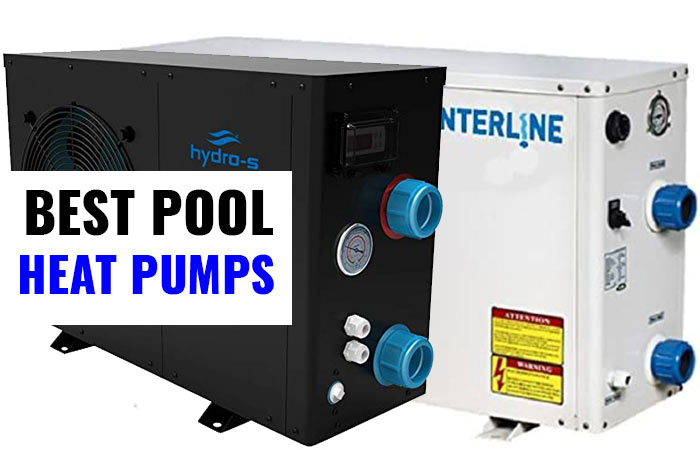How to Remove Dead Algae & Stains from Pool Bottom & Walls
Algae in swimming pools can be quite hectic to deal with given that it often takes over quite fast and renders your pool unusable. In most cases, it’s green algae that infests swimming pools although there are many types of algae that can take over your swimming pool.
Knowing what kind of algae has infested your pool and how to remove it is the solution to restoring the usability of your swimming pool. Luckily, while there are many types of algae, you only need to worry about a few of them infesting your pool or causing other damage.
With a brush, filter pump, vacuum and algaecide, you can quickly reclaim your pool for a swim. The best way to deal with algae, however, is preventing it. This is because, by the time you start seeing a color change in your pool, the algae would have spread out so much that you’ll need a thorough procedure to deal with it.
Identifying Algae in Swimming Pools
Scientifically, algae is the name of a large and diverse group of phototrophic, oxygenic and eukaryotic microorganisms. Put simply, algae are single-celled plants relying on the process of photosynthesis to thrive. Algae are usually slimy to the touch and vary in color.
The main types of algae are:
- Euglenoids (Euglenophyta)
- Fire algae (Pyrophyta)
- Red algae (RHodophyta)
- Yellow-green algae (Xanthophyta)
- Golden-brown algae (Chrysophyta)
- Green algae (Chlorophyta)
- Brown algae (Paeophyta)
The most common types of algae from this list include the following:
Green algae

Green algae are the most common types of algae and can be dark-green, yellow-green and blue-green in color. Green algae can also be floating in water or clinging to the wall and floor of the pool. These types of algae (about 700 of them) can be found in both salty and fresh water pools and other water bodies.
Green algae can be easily gotten rid of using chlorine, algaecides and the right water flow process. Those that grow on the side of the pool can be brushed off and the water filter run to eliminate it from the pool. With the right water pH, green algae can be prevented and even killed off.
Pink algae
Pink algae can be a headache to clear and it appears in corners and cracks then spreads to the rest of the pool. While it’s resistant to chlorine changes in the pool, large amounts of chlorine can kill it off. Besides that, you’ll need thorough brushing and shocking the pool to get rid of it.
Black algae
Black algae isn’t really black but blue-green in color. It usually grows in the crevices and cracks of the pool especially in the shady parts of the pool. It is common in pools finished by plaster or concrete given their rough surfaces.
When your pool has black algae, it’ll not change the color as much as green algae does. Instead, it’ll have black spots with a heavy slimy layer having skeletal growths. This type of algae is usually resistant to changing chlorine levels.
To clear it, you first need to analyze the pH of the water, brush the sides of the pool then shock the pool and add an algaecide to kill them off. The brushing should be particularly thorough to break the slimy layer which often protects the algae below from chemicals.
Mustard algae
Also called yellow algae, mustard algae can be easily mistaken for pollen or sand and thus hard to identify when it infests the pool. It usually settles to the bottom of the pool rather than the sides. It can be eliminated by brushing and vacuuming the bottom of the pool then adding an algaecide afterwards.
How to Get Rid of Algae from the Pool
No matter the type of algae infesting your swimming pool water, you need to follow the steps below to get rid of it and prevent its recurrence.
The steps are as follows:
1. Check and balance the water chemistry
First, you need to carry out tests to establish the water chemistry. These tests include pH levels are meant to establish whether the pool has the right acidity/alkalinity levels. If the pH level is not within the 7.2 to 7.8 range, you should note it then correct it accordingly.
2. Turn the pump on
Algae thrives in stagnant water. To discourage it growth, you should run the pump all the time especially during the cleaning process. The pump helps circulate the water and filters out any loose algae from the water.
3. Remove any debris from the water
The next step in the cleaning process is removing debris from the water using a net or other suitable tool. The pool net will remove floating algae, leaves and other unwanted items in the water. Depending on the size and depth of the pool, you may need to go to the bottom of the pool which might take a while.
4. Brush the sides and bottom of the pool
You then brush the sides and floor of the swimming pool to loosen up the algae and other types of debris stuck on the walls and the floor. The type of brush you use will depend on the material used to make the floor and sides of the pool. Hard materials such as plaster or concrete will need a tough stiff or wire brush while softer materials such as vinyl will need softer brushes.
When brushing the inside of the pool, brush all parts including the ladders, walls, corners, steps, the floor and any other parts covered by the water. You may also need to brush the parts next to the pool to prevent debris from getting inside it.
5. Vacuum the pool
Once the debris is free in the pool, you can use a pool vacuum cleaner to remove any algae and other types of dirt from the pool. While using a robot to clean the pool is easy on you, manually taking part in it is better as it’s thorough and with better results.
6. Clean the pool filters
When the debris and dead algae have been brushed off the walls of the swimming pool, the filter will have lots of dirt to filter from the water. At this stage, you need to clean the filters to allow them work again. If your pool uses sand filters, you need to backwash them. Cartridge filters are just to be cleaned.
The procedure to backwash your sand filters is as follows:
- Slide the push valve or turn the multiport valve handle to the backwash option.
- Turn on the pump and run it until the water is clear.
- Shut off the pump then move the valve back to the filter option and then turn the filter back on.
Your sand filter will be ready to use again.
7. Shock the pool
Shocking the swimming pool is the next step in removing algae from it. While you should shock your pool every week, it can be hard keeping this routine and missing one pool shocking session can provide conditions for algae and other plants to grow in the pool.
While most types of algae will die off with a single session of shocking the pool, black algae will need several shocking sessions to properly eliminate them. As you shock the pool, do so early in the morning to avoid the effect of the sun on chlorine.
8. Brush the pool again
After shocking your pool, brush the insides again like you did in the previous step. You might feel that you already did the brushing and want to skip it but you have to brush the pool again to catch the algae that has been killed off by the shocking process.
9. Floc the pool
The process of adding a flocculent to the pool is meant to kill any tough spores and any other particles not removed in the other stages of the cleaning process. Adding a pool flocculent is especially vital to the pool if you’re dealing with tough types of algae such as mustard or black algae.
The simple procedure to floc your pool is as follows:
- Test the pH of the water to ensure it’s at 7.0. If it’s higher than that, lower it by adding sodium bicarbonate. If lower than that, raise it with the addition of sodium sulfate.
- Dilute the flocculent as per the instructions of the manufacturer then pour it into the pool along the sides.
- Run the filter pump for about 4 hours then let the pool stay still overnight. Sediments will collect at the bottom fo the pool and can be removed with ease.
Your pool will be much cleaner after this procedure.
10. Vacuum the pool again
After you floc the pool, you have to vacuum it again like you did in the previous procedure. This way, the pool will much cleaner of the algae that would have been killed off by the procedures above.
11. Clean the filters once more
Your filters would have caught more algae and debris after the above procedures and would likely be clogged up. You should thus clean them out to allow the filters work properly. For sand filters, backwash them to clean them up.
12. Add an algaecide
You should then add an algaecide to the pool water. Algaecides help kill off any remaining algae and algae spores and prevent new ones from germinating and spreading.
13. Balance the pool chemistry
The last stage of this procedure is rebalancing the chemistry of the pool. The balance should be as follows:
- Chlorine should be between 1 and 3 ppm
- pH should be between 7.4 and 7.6
- Alkalinity should be between 80 and 140 ppm
Once you attain these values, your pool will be safe to use again.
Effects of algae in the swimming pool
Algae is bad for your pool due to the following reasons:
They clog up the pool filters
Algae grows in lumps and masses making it hard for the filters to work properly. If they get to the filters, they’ll grow into the mess making the filters less effective at filtering the water. If not cleaned out, they will even totally stop the flow of water through the filters.
They make the steps slippery and dangerous
When algae grows on ladders, steps and the wall of the pool, it makes them slippery and slimy to the extent that users of the pool are at risk of slipping and injuring themselves. Worse still, if left to grow on these surfaces for long, it’ll damage them at times permanently.
Damages the look of your pool
Besides plainly giving your swimming pool an awful and scary look, algae also raise the pH of your pool. This leads to a buildup of calcium deposits and scaling on the floor and sides of the pool. This state also affects fiberglass and concrete surfaces with time with discoloration and stains being noted.
Promotes the growth of germs
Algae isn’t dangerous to humans but can act as a medium for the growth of germs and bacteria like E. coli and others. For this reason, you should properly get rid of it before using the pool again.
Measures to prevent Algae Stains & Dust in Pool
Your pool will almost always have algae spores since they come in through the wind and rain, people, swimsuits and many other avenues. They would then grow due to various conditions such as:
- Warm weather
- Clogged filters
- Poor circulation in the pool
- Dirt and debris in the pool
- Low levels of chlorine
- High pH levels
- Malfunctioning pool pumps
- Poor pool cleaning routine
- High temperature in the water
Luckily, you can prevent the growth of algae in your swimming pool with the following measures:
Keep the water circulating
Algae will grow faster in stagnant water since the spores need to stick to a surface to grow. If you circulate water in the pool, it’ll not give the algae time and surfaces to grow on. Running the pool’s pump will do the trick and it’s something that ought to be done daily. Running it for at least 10 hours each day is the recommended time.
Regularly brush the pool
You should keep a healthy cleaning routine for your pool which involves regular brushing of all the parts of the pool. The brushing should be in line with the type of material the pool is made of. If made of tough materials like concrete, you can use a hard brush since it can withstand that. Softer materials will require the use of a softer brush to avoid damage.
Vacuum the pool regularly
Besides the action of the filter pump for your pool, you should use a vacuum cleaner for your pool to clear out any dirt and debris. Some robotic vacuum cleaners have brushes that can help brush the floor and sides of the pool.
Shock the pool on the regular
Shocking the pool helps kill germs and algae in the water by making the conditions unbearable to them. This should be done every week without fail. This discourages the growth of algae and moss even when the pool has their spores.
Balance the pool’s chemicals
When the pool’s pH is high and the pool is thus basic (as opposed to being acidic), algae will thrive in it. You should thus keep the pH of the pool about 7.4. Besides this, you need to maintain the chlorine level between 2 and 4 ppm besides many other chemical balances. You should have a pool-testing kit to help you find the right chemical balance for your pool.
Add an algaecide to the pool
The right algaecide for the type of algae infesting your pool will help keep the algae at bay by killing it off and preventing its growth as well.







